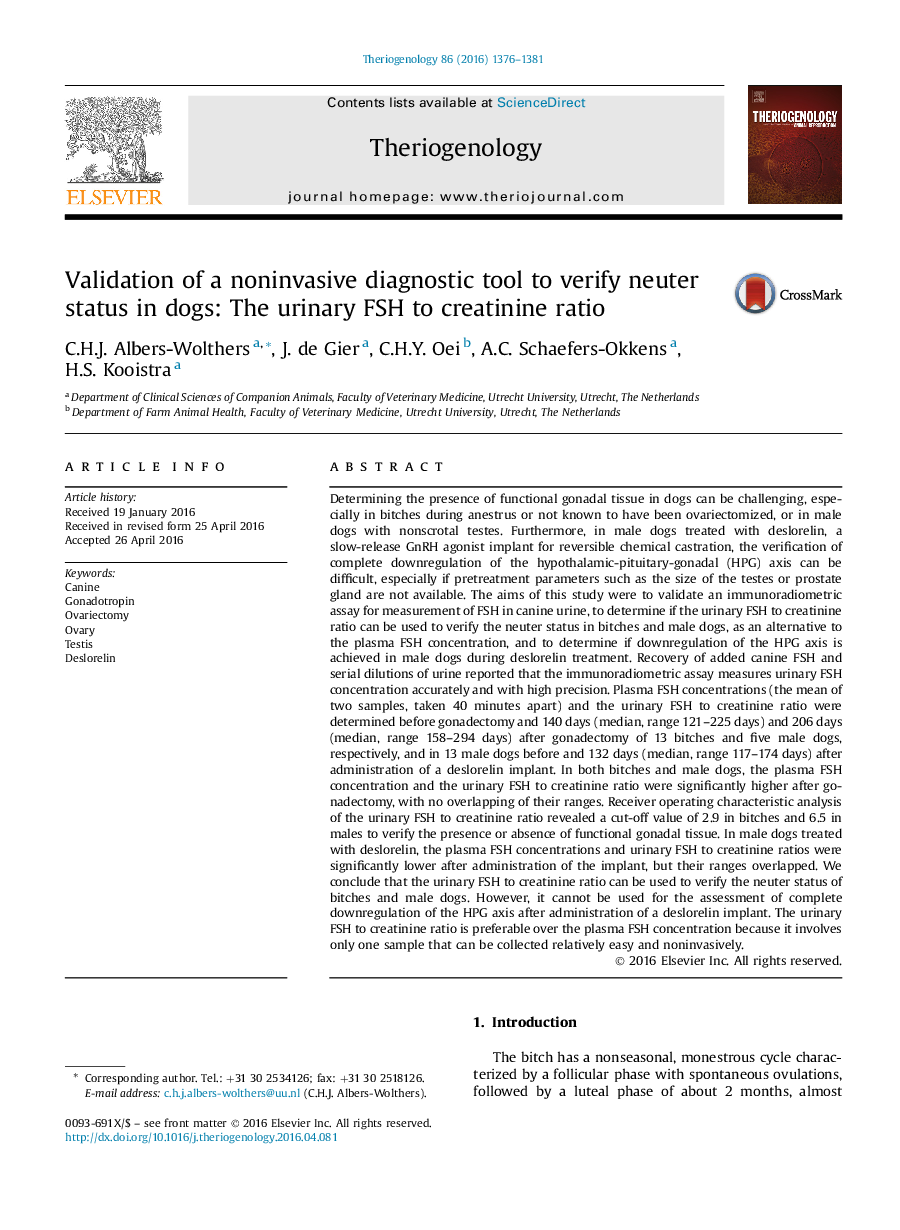| کد مقاله | کد نشریه | سال انتشار | مقاله انگلیسی | نسخه تمام متن |
|---|---|---|---|---|
| 2094774 | 1082051 | 2016 | 6 صفحه PDF | دانلود رایگان |
Determining the presence of functional gonadal tissue in dogs can be challenging, especially in bitches during anestrus or not known to have been ovariectomized, or in male dogs with nonscrotal testes. Furthermore, in male dogs treated with deslorelin, a slow-release GnRH agonist implant for reversible chemical castration, the verification of complete downregulation of the hypothalamic-pituitary-gonadal (HPG) axis can be difficult, especially if pretreatment parameters such as the size of the testes or prostate gland are not available. The aims of this study were to validate an immunoradiometric assay for measurement of FSH in canine urine, to determine if the urinary FSH to creatinine ratio can be used to verify the neuter status in bitches and male dogs, as an alternative to the plasma FSH concentration, and to determine if downregulation of the HPG axis is achieved in male dogs during deslorelin treatment. Recovery of added canine FSH and serial dilutions of urine reported that the immunoradiometric assay measures urinary FSH concentration accurately and with high precision. Plasma FSH concentrations (the mean of two samples, taken 40 minutes apart) and the urinary FSH to creatinine ratio were determined before gonadectomy and 140 days (median, range 121–225 days) and 206 days (median, range 158–294 days) after gonadectomy of 13 bitches and five male dogs, respectively, and in 13 male dogs before and 132 days (median, range 117–174 days) after administration of a deslorelin implant. In both bitches and male dogs, the plasma FSH concentration and the urinary FSH to creatinine ratio were significantly higher after gonadectomy, with no overlapping of their ranges. Receiver operating characteristic analysis of the urinary FSH to creatinine ratio revealed a cut-off value of 2.9 in bitches and 6.5 in males to verify the presence or absence of functional gonadal tissue. In male dogs treated with deslorelin, the plasma FSH concentrations and urinary FSH to creatinine ratios were significantly lower after administration of the implant, but their ranges overlapped. We conclude that the urinary FSH to creatinine ratio can be used to verify the neuter status of bitches and male dogs. However, it cannot be used for the assessment of complete downregulation of the HPG axis after administration of a deslorelin implant. The urinary FSH to creatinine ratio is preferable over the plasma FSH concentration because it involves only one sample that can be collected relatively easy and noninvasively.
Journal: Theriogenology - Volume 86, Issue 5, 15 September 2016, Pages 1376–1381
